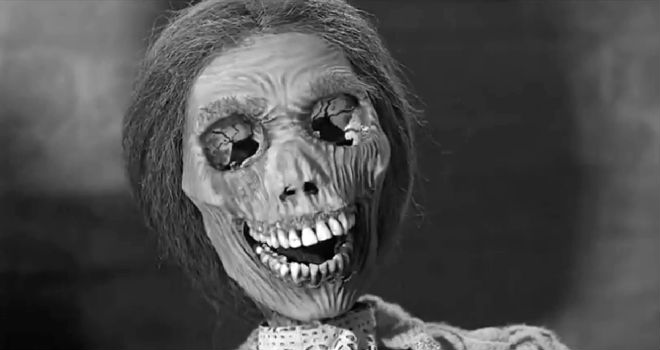
(Psycho Poster, 1960)
Psycho is a 1960 American psychological horror directed by Alfred Hitchcock, based on the 1959 novel of the same name by Robert Bloch.
"In Psycho, Alfred Hitchcock not only created a blazing masterpiece and spawned a new cinematic genre – the slasher. He also delivered one of the boldest blows in screen history. It was not just how he killed Janet Leigh's Marion Crane, astonishing though that was – it was when." (Monahan, 2015)
The film starts with our supposed heroine and her boyfriend. They get up, get dressed and she goes to work. She goes about her daily business until she comes across a large sum of money she's meant to take to the bank for her boss. The next 40 minutes is of her driving up to meet her boyfriend to give him the money for her debts. And in a hotel she stays at, after only just identifying with this girl, she is killed in one of the most iconic scenes in film history.
"In Psycho, Alfred Hitchcock not only created a blazing masterpiece and spawned a new cinematic genre – the slasher. He also delivered one of the boldest blows in screen history. It was not just how he killed Janet Leigh's Marion Crane, astonishing though that was – it was when." (Monahan, 2015)
The film starts with our supposed heroine and her boyfriend. They get up, get dressed and she goes to work. She goes about her daily business until she comes across a large sum of money she's meant to take to the bank for her boss. The next 40 minutes is of her driving up to meet her boyfriend to give him the money for her debts. And in a hotel she stays at, after only just identifying with this girl, she is killed in one of the most iconic scenes in film history.

(Psycho, 1960)
"The film is 109 minutes long, but he offs his heroine, the glamorous miscreant with whom he's made us identify, after just 47. In 1960, this generated, by all accounts, an unprecedented sense of careering into uncharted and terrifying territory: what the hell would happen next? Even now, it's distinctly unnerving." (Monahan, 2015)
Its a very clever scene, made of many 70 camera setups and 78 pieces of film. And yet the knife is never seen piercing her flesh. Its merely implied by the action of the camera and of the actress. The film is a wonder in the uses of misdirection, not only in this scene but in the entirety of the plot itself.
We are made to think the killer of our heroine is the hotel managers mother. But toward the end of the movie we are shown that it was the manager himself, with an alternate personality acting as his mother. This is very clever, and the way Hitchcock hid this was so simple it makes you a fool when the film tells you about it.


(Psycho, 1960)
"There, it appears, he has a mother—a cantakerous old woman—concealed. And that mother, as it soon develops, is deft at creeping up with a knife and sticking holes into people, drawing considerable blood." (Crowther, 1960)
He never shows the mother directly. Not talking, not moving. Only twice. Once when the manager carries her downstairs and another when she's revealed to be a corpse. She's heard talking but by the end of the film its revealed that it was the manager talking as her.
Bibliography:
Images:
Psycho Poster. (1960). [image] Available at: https://upload.wikimedia.org/wikipedia/en/b/b9/Psycho_%281960%29.jpg [Accessed 24 Jan. 2018].
Psycho. (1960). [DVD] Directed by A. Hitchcock. United States: Paramount.
Quotes:
Monahan, M. (2015). Psycho, review. [online] Telegraph.co.uk. Available at: http://www.telegraph.co.uk/culture/film/filmreviews/11025424/Psycho-review.html [Accessed 29 Jan. 2018].
Crowther, B. (1960). Movie Review - - PSYCHO - NYTimes.com. [online] Nytimes.com. Available at: http://www.nytimes.com/movie/review?res=EE05E7DF173DE273BC4F52DFB066838B679EDE [Accessed 29 Jan. 2018].

Hi Annie!
ReplyDeleteBe careful that what you write makes sense! Here, for example - 'He never shows the mother directly. Not talking, not moving. Only twice.' Either he never shows talking or moving, or he does so twice... actually, I would argue that you do see 'her' moving; how about when she pushes the detective down the stairs, or indeed, the shower scene? (Obviously, with hindsight we know it is not 'her', but while watching it, we are under the impression that it is...
You need to have another look at your bibliography - it should be organised alphabetically, and also the 'links' heading should not be necessary, as they are surely part of the bibliographical listing? (So Roger Ebert for example, should appear in the bibliography.)